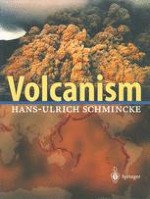2004 | OriginalPaper | Buchkapitel
Volcanoes and Climate
verfasst von : Professor Hans-Ulrich Schmincke
Erschienen in: Volcanism
Verlag: Springer Berlin Heidelberg
Enthalten in: Professional Book Archive
Aktivieren Sie unsere intelligente Suche, um passende Fachinhalte oder Patente zu finden.
Wählen Sie Textabschnitte aus um mit Künstlicher Intelligenz passenden Patente zu finden. powered by
Markieren Sie Textabschnitte, um KI-gestützt weitere passende Inhalte zu finden. powered by
Benjamin Franklin (1706–1790) was one of the most eminent men of his time. During his stay as ambassador of the United States in France, he noted that both the people of Europe and the US had become agitated by the coldest winter in memory (Fig. 14.1). A blue, cold and, as Franklin emphasized, dry fog, which could not be dissolved by the sun’s rays, had started to cover the northern hemisphere in the summer of 1783. As far as we know, Franklin was the first scientist who related the blue fog and the dramatic deterioration of climate to volcanic eruptions (101). He was thinking of Hekla volcano in Iceland, but this time the most famous volcano of Iceland was not the source for the fog. Hekla was by the way interpreted as being the entrance to hell in medieval times and may have been on the mind of Jules Verne as the gate in Iceland through which his hero, Professor Dipenbrock started his journey to the center of the Earth at Snaefellsness volcano. In June/July 1783, about 12.5 km3 basaltic lava had erupted from a large fissure in Iceland, the Lakagir fissure, but only 0.7km3 tephra was generated (332). Three quarters of the animals on Iceland (200000 sheep, 30000 horses, 10000 cattle) died, apparently due to fluoride-poisoning (fluorosis) from the fluorine-rich gases and ash deposited on the pastures, as well as starvation because of the lack of feed. These effects probably lingered, due to the volcanic haze-induced deterioration of climate. About 10000 people died in the resulting famine, one fifth of the population of Iceland. While Franklin wrote a scientific essay on the problem, newspapers in the summer 1783 across Europe were full of speculations on volcanoes to be the source of the foul smelling air and depressing atmosphere. One newspaper in Germany even made up a story of an erupting volcano southeast of Frankfurt being the source of the oppressive weather. The flooding of central Europe in the summer of 1784 due to incessant rain was the worst in the past 1000 years (122) most likely the aftereffects of the Laki eruption a year earlier.
